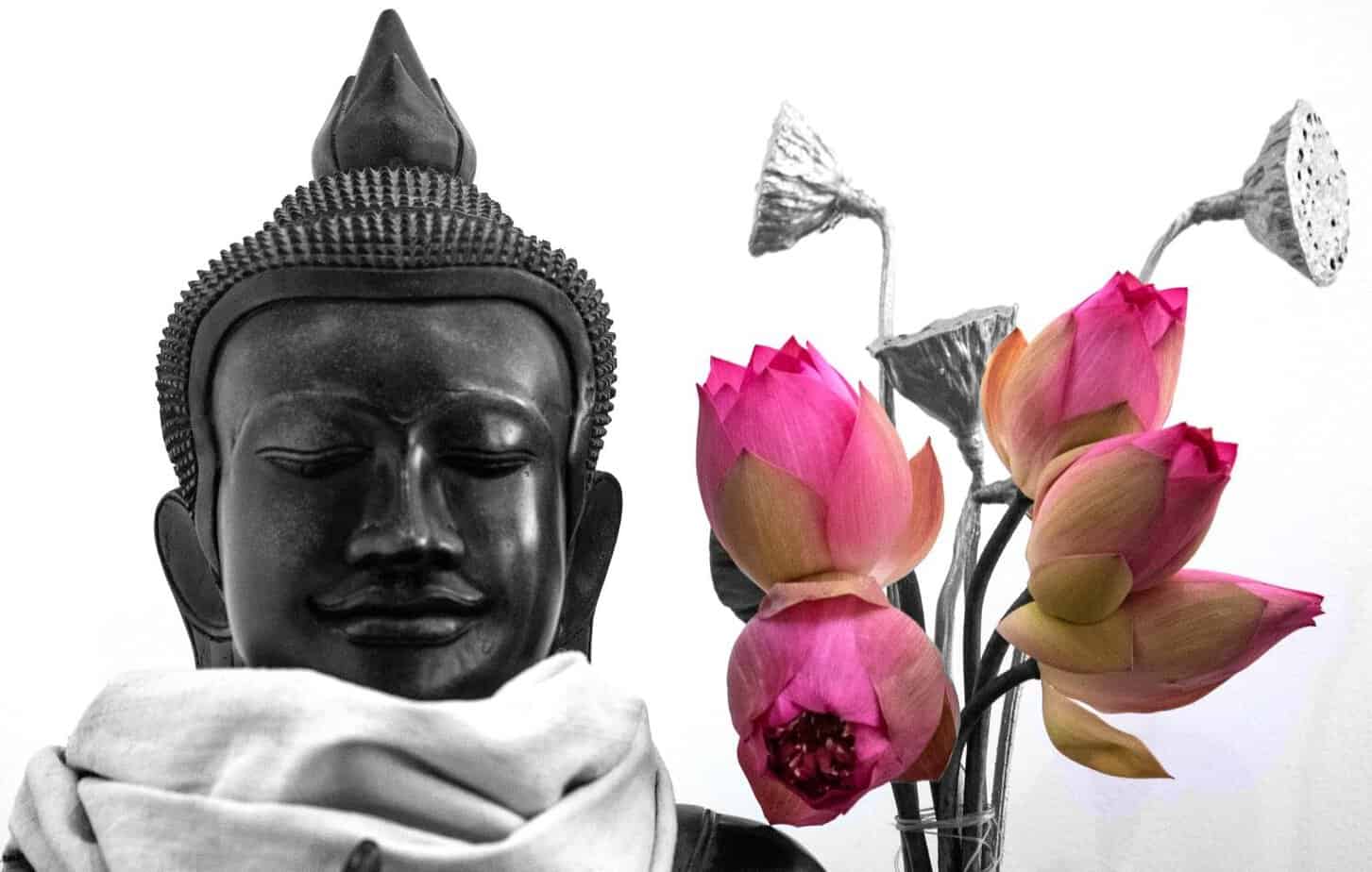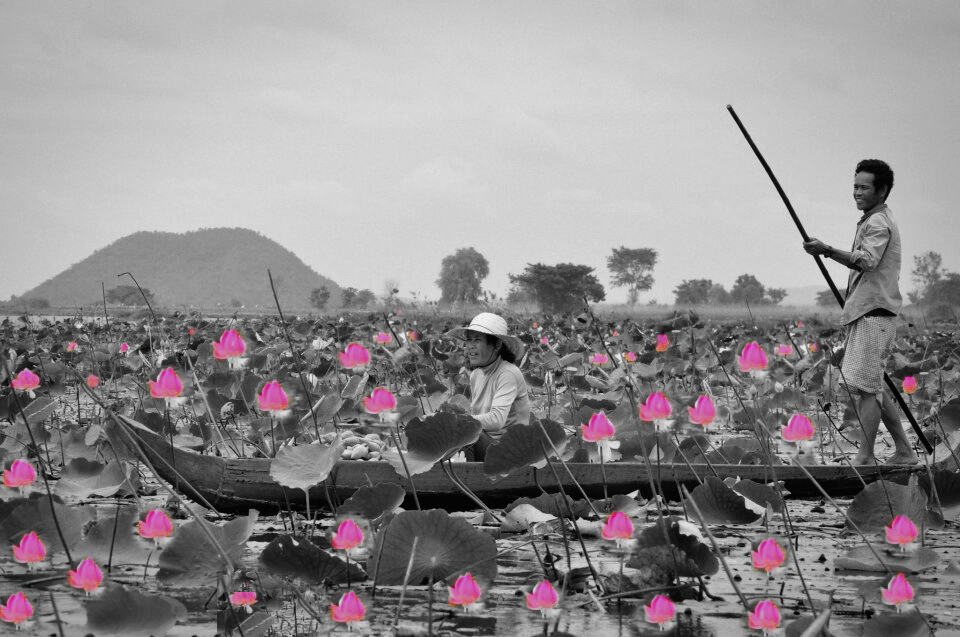Eco Luxury Fabrics
Is lotus textiles the most eco luxury fabrics?
These unique Lotus fabric has unique properties. It is naturally soft, light and breathable.
It is also a very eco-friendly fabric containing no chemicals or toxic products. It’s probably the most ecological fabric in the world.
Symbolism of Lotus
 « The soul spreads itself like a lotus with innumerable petals » (Khalil Gibran)
« The soul spreads itself like a lotus with innumerable petals » (Khalil Gibran)
In South Asia, the sacred Lotus is omnipresent in religious history. For Buddhists, beyond the fact that the lotus is a sacred flower, it’s a symbol of every man and woman’s ability to surpass their conditions. No matter their origin, they accomplish themselves. It is like the lotus flower growing tall until it floats above the muddy waters. Everyone has the potential to elevate themselves. And then reach Buddha’s state “without letting the world pollute them like a lotus on water” – the Lotus Sutra, one of Buddhism’s most important, educational texts.
The plant on which Buddha frequently sits expresses all the promises of the future of a better person. For decades, the flower symbolizes wisdom and spirituality. We can equally read the Lotus Sutra as an encouragement to actively engage in others’ lives as well as society. The lotus flower is unlike any other flower. It grows in rough conditions, the feet in the mud. The lotus seems to be fragile. But it is flexible and strong. And finally it gets out of the muddy water to open itself to the world.
Eco luxury fabrics and cambodian social business
Samatoa believes in the symbolic strength of the Lotus Sutra! It follows the same positive and humanist dynamic. Its economic, social, and environmental projects allow vulnerable women to become autonomous by supporting their family decently.
There is a popular Asian saying that a pond without lotus is like a home without women. Indeed, the lotus is still really important in the daily lives of the Cambodian people. Lotus plant is used in religious rituals as well as in domains like medicine, cuisine, and cosmetics. However, the lotus is far less known for its textile use. Once worn by Buddhist monks, the weaving of lotus fiber was once known and used across South East Asia without a doubt. It is now entering eco luxury fabrics market.
However, this activity began to fall into obscurity. Only the inhabitants of Inle Lake’s floating villages have continued to perpetuate this ancestral craft. Day after day, Samatoa brings lotus fabric back to life in Cambodia guided by its symbolism. For Samatoa, the Lotus represents the culmination of the company’s ultimate quest for excellence in eco luxury fabrics.
The new eco luxury fabrics
These new eco luxury fabrics allow the emancipation to vulnerable cambodian women. Samatoa uses the best socially responsible manufacturing techniques to create eco fabrics that support women’s empowerment in Cambodia. Our aim is to duplicate the workshop pilot project in Siem Reap and increase production capacity.

Our fibers are also incredibly friendly to the environment. The extraction, spinning, and weaving of the lotus fiber consumes no polluting resources. Social and environmental benefit and economic value are given to growing lotus and environmental conservation is taught to farmers. There is zero environmental impact in our process. Lotus benefits both nature and humans. Vegetal plants clean the water (phyto), provide foods for humans and animals (textifood), and protect animals (ecosystem). This is why the basics of the Samatoa model rely on the belief that the most sustainable economic development is intrinsically linked to best social, environmental, and economic practices.
We believe that ecofashion is defined not just by the use of natural fibers, but also by the use of fair-trade Cambodian labour in every step of a sustainable eco fabrics supply chain.
It’s with great pride that Samatoa bridges the gap between the rich and the poor using fair and ethical commerce. It allows formation, emancipation, and international recognition of our producers. Each man, and consequently vulnerable woman, can surpass their condition. Then they can elevate and accomplish “like the lotus flower growing above the muddy waters”.
